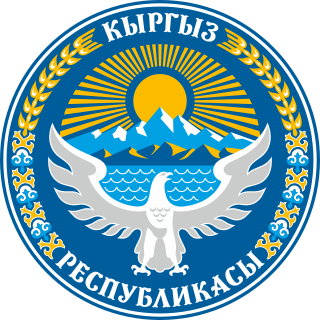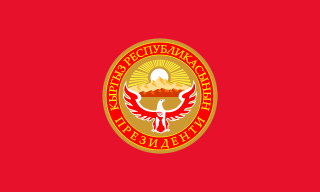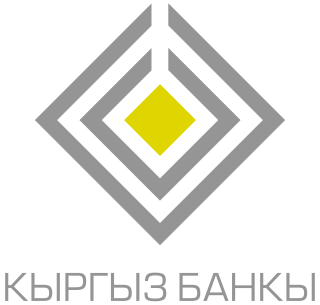
The history of the Kyrgyz people and the land now called Kyrgyzstan goes back more than 3,000 years. Although geographically isolated by its mountainous location, it had an important role as part of the historical Silk Road trade route. Turkic nomads, who trace their ancestry to many Turkic states such as the First and Second Turkic Khaganates, have inhabited the country throughout its history. In the 13th century, Kyrgyzstan was conquered by the Mongols; subsequently it regained independence but was invaded by Kalmyks, Manchus, and Uzbeks. In 1876, it became part of the Russian Empire, remaining in the USSR as the Kirghiz Soviet Socialist Republic after the Russian Revolution. Following Mikhael Gorbachev's democratic reforms in the USSR, in 1990 pro-independence candidate Askar Akayev was elected president of the SSR. On 31 August 1991, Kyrgyzstan declared independence from Moscow, and a democratic government was subsequently established.

The politics of Kyrgyzstan, officially known as the Kyrgyz Republic, takes place in the framework of a presidential system representative democratic republic, whereby the President is head of state and the Chairman of the Cabinet of Ministers is head of government. Executive power is exercised by the government. Legislative power is vested in both the government and parliament. The Economist Intelligence Unit rated Kyrgyzstan an "authoritarian regime" in 2022.

Kyrgyzstan, officially the Kyrgyz Republic, is a landlocked country in Central Asia, lying in the Tian Shan and Pamir mountain ranges. Bishkek is the capital and largest city of the country. Kyrgyzstan is bordered by Kazakhstan to the north, Uzbekistan to the west, Tajikistan to the south, and China to the east and southeast. With a population of 6.7 million, Kyrgyzstan is the 34th-most populous country in Asia, and the 4th-most populous country in Central Asia. Ethnic Kyrgyz make up the majority of the country's seven million people, followed by significant minorities of Uzbeks and Russians.

The Kyrgyzstan national football team, officially recognised by FIFA and AFC as Kyrgyz Republic, represents Kyrgyzstan in international football and is controlled by the Kyrgyz Football Union, a member of the Asian Football Confederation (AFC) and Central Asian Football Association.

The president of Kyrgyzstan, officially the president of the Kyrgyz Republic, is the head of state and head of government of the Kyrgyz Republic. The president directs the executive branch of the national government, is the commander-in-chief of the Kyrgyz military and also heads the National Security Council.
Mayluu-Suu is a mining town in the Jalal-Abad Region of southern Kyrgyzstan. It is a city of regional significance, not part of a district. Its area is 120 square kilometres (46 sq mi), and its resident population was 25,892 in 2021. It has been economically depressed since the fall of the Soviet Union. From 1946 to 1968 the Zapadnyi Mining and Chemical Combine in Mayluu-Suu mined and processed more than 10,000 short tons (9,100 t) of uranium ore for the Soviet nuclear program. Uranium mining and processing is no longer economical, leaving much of the local population of about 20,000 without meaningful work. The town was classified as one of the Soviet government's secret cities, officially known only as "Mailbox 200". Mayluu-Suu consists of the town proper, the urban-type settlement Kök-Tash and the villages Sary-Bee, Kögoy and Kara-Jygach.

The Supreme Council is the unicameral parliament of the Kyrgyz Republic. It was known as the Supreme Soviet of the Kirghiz Soviet Socialist Republic until 1991.

The coat of arms of the Kirghiz Soviet Socialist Republic was adopted on March 23, 1937, by the government of the Kirghiz Soviet Socialist Republic. The coat of arms is based on the coat of arms of the Soviet Union. It shows symbols of agriculture on a backdrop of the Ala-Too mountain ranges, surrounded by a frame of folk art of the Kyrgyz people. The red star was added in 1948. The rising sun stands for the future of the Kyrgyz nation, the star as well as the hammer and sickle for the victory of communism and the "worldwide socialist community of states".

The Cabinet of Ministers is an executive body presided by the Chairman of the Cabinet of Ministers of Kyrgyzstan. The status and provisions of the government are determined by Section V of the Constitution of Kyrgyzstan. The cabinet consists of the deputy chairmen, ministers and the chairmen of state committees.

A new constitution of Kyrgyzstan was passed by referendum on 21 October 2007. It is based on the first post-Soviet constitution originally adopted on 5 May 1993.

Suzak is a village in Jalal-Abad Region, Kyrgyzstan. Its population was 30,534 in 2021. It is the administrative seat of Suzak District.

The National Bank of the Kyrgyz Republic is the central bank of Kyrgyzstan and is primarily responsible for the strategic monetary policy planning of the country as well as the issuance of the national currency, the Som.

Kyrgyzstan – United States relations are bilateral relations between Kyrgyzstan and the United States.

The Ministry of Foreign Affairs is the Kyrgyz government ministry which oversees the foreign relations of Kyrgyzstan.

A constitutional referendum was held in Kyrgyzstan on 27 June 2010 to reduce presidential powers and strengthen democracy in the wake of the riots earlier in the year. Parliamentary elections followed on 10 October 2010.

Early parliamentary elections were held in Kyrgyzstan on 10 October 2010. All 120 seats of the Supreme Council were elected by the party list system. Seats were allocated to all parties who obtained more than 5% of the vote overall and more than 0.5% in each of the nine provinces, capped at 65 seats per party.

The Constitution of Kyrgyzstan was the supreme law of the Kyrgyz Republic. The constitution in force from 2010 until 2021 was passed by referendum on June 27, 2010, replacing the previous constitution. It introduced a strong parliament to the country, reducing the power of the historically strong president. The constitution is similar in many ways to the previous one.

A constitutional referendum was held in Kyrgyzstan on 11 December 2016. The constitutional amendments were approved by around 80% of voters.

The TURKPA in full, the Parliamentary Assembly of Turkic States, is an international organization comprising some of the Turkic countries. It was founded on 21 November 2008 in Istanbul. The General Secretariat is in Baku, Azerbaijan. The member countries are Azerbaijan, Kazakhstan, Kyrgyzstan and Turkey. Hungary and Northern Cyprus are observers.

Snap parliamentary elections were held in Kyrgyzstan on 28 November 2021. They followed the annulment of the results of the October 2020 elections and the subsequent protests against the election's conduct. Six parties passed the 5% threshold needed to win seats in the parliament. Turnout hit a record low at less than 35%.














